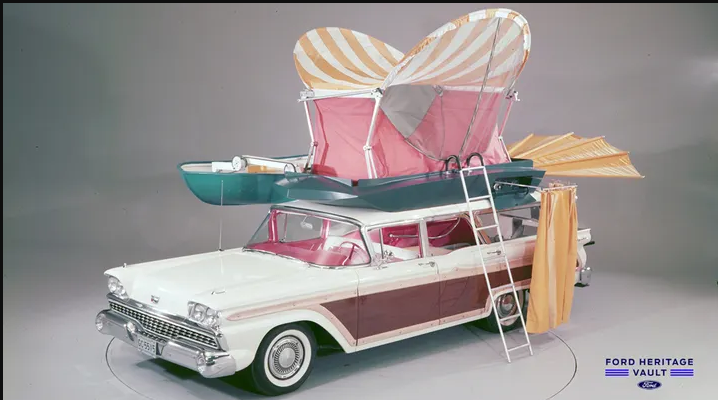Since the dawn of the automobile, carmakers have tried to add new accessories to entice buyers. Some of those accessories went the way of the Dodo because of new technology and others just out of common sense. As computer technology continues to be refined, more common auto features of the past are disappearing.
With the Model T, Henry Ford thought he had created a vehicle that would last the buyer a lifetime – never mind the car had to be hand cranked and was not fully enclosed to the weather. It was Ford’s son, Edsel, who warned his father that once everyone had a “lifetime” vehicle, the company would go out of business and, with that, the gadget race was on.
Some cars of the 1950s had a fifth wheel in the trunk that would lower and aid in parallel parking. That curious accessory did not last long. In 1955, Dodge introduced the La Femme that was aimed at women. The La Femme came in pink pastel colors and was complete with an umbrella, raincoat, a special matching purse and a lipstick holder. The car only lasted two model years.
MORE: MotorHeadline: Catalytic converter theft
In 1959, Ford offered the Country Squire wagon which came with a special top that could be used to hold a tent that was provided. The top could be removed, the tent stowed and then be used as a boat. Interestingly, Pontiac would, decades later, offer the Aztec which came with a canvas monstrosity that turned the vehicle itself into a giant tent. The Aztec is credited with being the final dud that killed Pontiac.
The 1980s saw some of the most aggravating accessories. Japanese cars came with a feature where cars would talk to the driver, but the early technology was not fool proof and sometimes drivers would have to listen to a creepy voice telling them a door was ajar over and over again until the system could reset itself.
However, cars are now being fitted with internet capabilities, so talking cars may return.
Another curious and annoying feature was the automatic seat belt which could malfunction and trap people in the car. Most people took care of the problem with a pair of scissors.
One option that might be popular in today’s economic climate would be cylinder deactivation where the engine could save gasoline by switching from an eight cylinder to six and then to four. Cadillac offered the accessory in the 1980s, but the system was so unpredictable that people would deactivate the cylinder deactivation system.
One feature that has been standard equipment for almost one hundred years is the terrestrial AM/FM radio. Over the years, car manufacturers offered record, cassette tape and CD players, all of which are gone from modern cars. However, the radio has always been a mainstay.
Technology, though, is likely to make the terrestrial radio tuner obsolete. New cars come with USB ports so people can play their own music. Also, most radio stations already stream their terrestrial signals online, so if a car is hooked up to the internet, a tuner becomes an unneeded device that takes up dash space.
Standard car keys have also all but disappeared. In the 1930s, Duesenberg cars came with an entire ring of keys and each key had a different function; there were separate keys for the doors, trunk, ignition, glove compartment, golf bag compartment and battery compartment.
MORE: MotorHeadline: As summer approaches, are you ready for the road?
Today’s cars come with a fob that does not even need to be inserted in the car. As long as the fob is in the pocket of the user, the push of a button will crank the vehicle. However, fo’s may soon become a thing of the past as well. New technology can link the vehicle to a smart phone and all the user will have to do is say “Siri, start the car.”
Manufacturers are also phasing out the spare tire, but for an entirely different reason than what one might think. Modern cars come with a tire inflation detection system and are equipped with inflation kits that plug small leaks. However, the reason to scrap the spare has everything to do with weight reduction which adds to fuel economy.
One former mainstay of the automotive world that is disappearing rapidly is not an accessory, but an entire type of car. The four-door sedan was once the most popular style of coach, however, the SUV has become the more popular family friendly body style.
Ford eliminated all sedans, including the once popular Taurus, at the end of the 2019 model year and Chrysler has hinted many times that 2023 is the likely the last year for the 300 model, a marque that goes back to the late 1950s.
So, in the future, the only people riding in a four-door sedan equipped with a radio might be riding in the back of a police patrol car.











